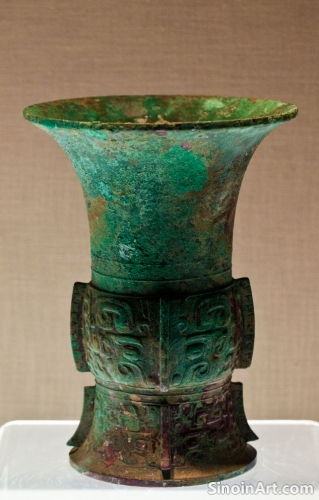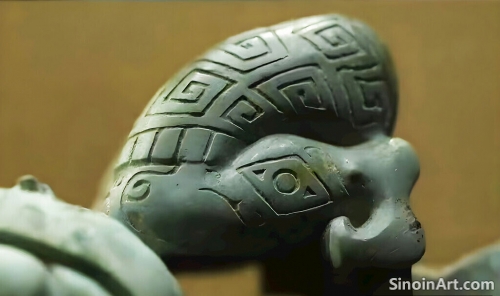Bronze Ware and the Power of Inscriptions: Communicating History, Lineage, and Identity
|
The inscriptions found on Chinese bronze ware are more than just written characters; they are powerful forms of communication, conveying historical information, establishing lineage ties, and asserting individual and family identity. These inscriptions provide a valuable link to the thoughts and beliefs of the past. The words preserved in bronze provide a direct connection to the people of ancient China.  Bronze inscriptions often recorded significant events, such as royal decrees, military victories, or the establishment of lineage claims, providing valuable insights into the social and political landscape of ancient China. The inscriptions help us to further understand the values and beliefs of the people of the time. These ancient texts are a valuable link to the history of the past.  The names, titles, and family relationships recorded in bronze inscriptions helped to solidify lineage ties and establish familial identities across generations, with many families using these texts to underscore their place in society. The emphasis on lineage and ancestry helped to shape the overall culture of ancient China. The establishment of a family's history and their place in society was an essential component of ancient Chinese culture.  The study of bronze inscriptions helps to understand the evolution of Chinese writing, and it serves as a primary source for understanding the history, culture, and values of the ancient world. The detailed and specific content of the inscriptions offers a unique opportunity to understand ancient Chinese society. The care with which these texts were created suggests the importance that they held for their creators. |
Tag : bronze inscriptions, Chinese lineage, ancient identity, jinwen, historical texts
Related information
- The Enduring Legacy of Chinese Bronze Ware: A Timeless Art Form and Cultural Treasure
- Bronze Mirrors and the Concept of "Face" in Ancient Chinese Society: Identity and Social Status
- The Challenge of Authenticating Ancient Chinese Bronze Ware: Forgeries and Expertise
- Bronze Ware and the Development of Ancient Chinese Cartography: Surveying Tools and Geographic Understanding
- The Role of Bronze in Ancient Chinese Warfare: Strategies and Weapons
This article reflects on the enduring legacy of Chinese bronze ware, highlighting their combination of technical skill, artistic beauty, and historical significance, their power to tell stories from the past, and the importance of their preservation for future generations.
This article explores the connection between bronze mirrors and the concept of "face" (mianzi) in ancient China, highlighting how mirrors were used to manage social image, convey respect, and reflect the importance of social status both in life and after death.
This article discusses the challenges of authenticating ancient Chinese bronze ware, highlighting the use of visual inspection, scientific testing, stylistic analysis, and the expertise required to distinguish between genuine artifacts and forgeries.
This article explores the use of bronze in ancient Chinese cartography, highlighting its role in creating surveying tools, mapping instruments, and its connection to the accurate measurement and mapping of the ancient landscape.
This article explores the role of bronze in ancient Chinese warfare, highlighting the types of weapons, armor, and chariot fittings, and examining the strategies and tactics employed, revealing the military power of the era.